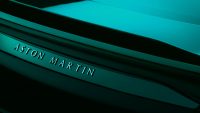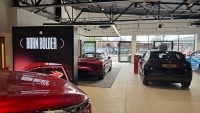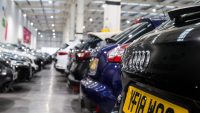 THE reasons why Rover doesn’t exist today are perhaps epitomised by the launch of the Metro.
THE reasons why Rover doesn’t exist today are perhaps epitomised by the launch of the Metro.
In development for more than half the 1970s, it was nevertheless rushed to launch and then, well, never really achieved the goals set for it.
Sure, it did pretty well in terms of sales – it wouldn’t be a legend if it hadn’t sold two million in its time. But the car designed to seal the future of the firm didn’t really manage to do that.
As such, the Metro underlines that judging things in terms of pure sales is a risky business. Why? Look at Jaguar of recent years: it’s stepped back from a high-volume strategy to one of quality sales instead. The result is more profit, more stability for the company, and less susceptibility to the marketplace. It’s thriving by NOT being a sales legend.
Ah, if British Leyland had been able to make such a measured judgment. Instead, though, the Metro was borne out of necessity. Here was a car that had to sell in massive numbers, in order to keep tens of thousands in work and maintain the might of the publically-owned company. Quite a responsibility for the little hatchback’s shoulders.
The launch was accompanied with flag-waving jingoism of epic proportions. Maggie Thatcher was pictured with one, Prince Charles visited the production line, press and TV ad slots were awash with Metros poking over the White Cliffs of Dover, seeing off Johnny Foreigner and giving Britain a British car to be proud off.
ROBOTS
That it was nowhere near as groundbreaking as the earlier Renault 5, or as serviceable as a Ford Fiesta, or plain well-rounded like the later Peugeot 205, didn’t seem to matter. BL had installed an expensive, hi-tech robot-assisted production line, and Metros were soon flowing off in high volumes.
It sold, for sure. Rightly so, too. For its day, it was eye-openingly spacious, well made, nimble to drive and pretty economical. The ride was stiff, engines harsh and prices high-line, but it was a sporty and pleasant steer.
Trouble is, British Leyland all-but engineered in the seeds of its later struggles. As time went on, the competition would grow, leaving it very much at the ‘mini’ end of the market.
 The aged engine never got a five-speed gearbox, and would always be thrashy and noisy. Five doors was an afterthought and, so tight was money when it came to replacing it, the firm instead decided to rejig the suspension and install a new engine into the existing bodyshell.
The aged engine never got a five-speed gearbox, and would always be thrashy and noisy. Five doors was an afterthought and, so tight was money when it came to replacing it, the firm instead decided to rejig the suspension and install a new engine into the existing bodyshell.
This became the Rover Metro. Then, the Rover 100. Then, was smashed into a EuroNCAP wall and destroyed a steady but all-important trickle of sales for Rover dealers overnight. Game over.
An odd car for us to choose for this month’s sales legend, you may think. Was it any such thing? Well, it sure was, in one sense. Speak to any Austin-Rover dealer of the 1980s, and they will say what a crucial car to their ongoing viability the Metro was. Without it, the firm simply would not have been able to take on Ford and Vauxhall in the battle of the big three.
In making the Metro a sales legend, Austin-Rover was doing as it always had done – with the Mini, with the 1100, with the Morris-Minor. Thing is, being a legend was not enough. This business model was flawed, as it simply was not bringing in the funds needed to sustain the business.
To be honest, it wasn’t paramount that the Metro be a sales legend. Jaguar has proven this in recent years. What’s needed are legendary margins, not just numbers. The recession is making this clear for car dealers, who now appreciate the importance not just of numbers, but of financial returns with them. Alas, it came too late for Rover.
by RICHARD AUCOCK
































